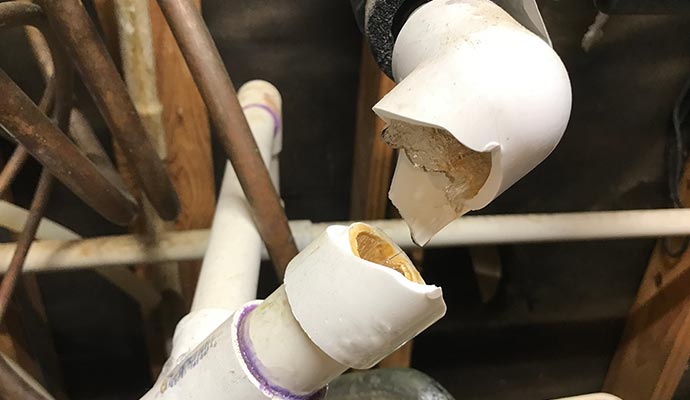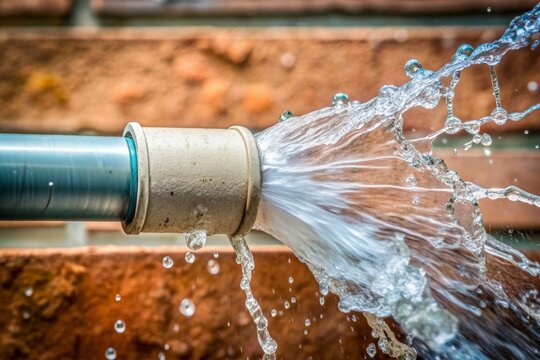Protecting Against Burst Piping: Vital Tips to Protect Your Pipes
Preventing ruptured pipes is a vital concern for property owners, specifically throughout chillier months when the threat of freezing is enhanced. Implementing calculated actions such as proper insulation, routine examinations, and maintaining constant indoor temperature levels can significantly minimize the likelihood of pipe failure. Furthermore, comprehending emergency procedures furnishes house owners to react swiftly to prospective plumbing problems. Numerous are unaware of the specific susceptabilities that their pipes may face. Checking out these susceptabilities can give indispensable understandings into protecting your plumbing system efficiently.
Understand Pipeline Vulnerabilities
Recognizing pipeline vulnerabilities is crucial for reliable pipes maintenance and stopping expensive damage. Several factors add to the vulnerability of pipes to ruptureds, consisting of product composition, age, and ecological problems. Older pipes, particularly those made from galvanized steel or polybutylene, frequently break down with time, resulting in boosted threat of leaks and tears.
Temperature level variations can also considerably effect pipe stability. In colder environments, water trapped in pipelines can freeze, exerting and increasing pressure on the pipeline walls, which may eventually cause a ruptured. High water stress can stress pipelines, particularly at bends and joints, heightening the possibility of failing.

Insulate Pipeline Appropriately
Proper insulation of pipelines is important for protecting against cold and succeeding bursts during winter (burst pipe). Insulating your pipes system efficiently safeguards against temperature goes down that can bring about pricey damage. Begin by recognizing at risk locations where pipes are subjected to exterior temperature levels, such as basements, attic rooms, and outside walls
Usage foam pipe insulation sleeves or cover insulation tape around these locations to supply a safety barrier. Guarantee that all sections of the pipes, especially those with limited heat direct exposure, get sufficient insulation. Pay special focus to joints and fittings, as these are a lot more prone to freezing.
When shielding, it's necessary to select materials that fulfill neighborhood building ordinance and are ideal for the certain setting. As an example, fiberglass insulation is typically suggested for its thermal resistance residential properties - burst pipe. Furthermore, consider making use of warmth cable televisions or tape in extreme problems, which can be connected in to supply additional warmth
On a regular basis examine protected pipes for any kind of indications of wear or damages, as compromised insulation can lessen its efficiency. By taking these aggressive steps, you significantly minimize the risk of pipe ruptureds, guaranteeing a dependable pipes system throughout the wintertime months.
Maintain Regular Temperature Level
A stable indoor temperature level is crucial for preventing ruptured pipes throughout the icy months. When temperature levels drop, water within pipes can freeze, broadening and developing stress that may inevitably trigger the pipelines view website to burst. To reduce this danger, home owners ought to keep a consistent temperature level throughout their living area, ideally no reduced than 55 ° F(13 ° C)Utilizing a programmable thermostat can assist handle interior temperatures efficiently, guaranteeing that rooms with plumbing stay cozy also when your home is empty. Pay special interest to locations that are much more vulnerable to cool, such as garages, attics, and cellars. Keeping cabinet doors open under sinks can likewise permit warmer air from the home to distribute around pipes.
This small flow of water can prevent freezing by minimizing stress within the pipelines. By executing these approaches, property owners can substantially lower the threat of pipe ruptureds and protect their plumbing systems against the severe winter months elements.
Frequently Evaluate Plumbing
Normal assessments of pipes systems are essential for protecting against burst pipelines and keeping total home stability. During these assessments, it is vital to analyze visible pipelines for signs of rust, leakages, or put on.
Additionally, evaluating connections and joints is crucial, as these points are typically vulnerable to leakages. Homeowners need to likewise examine water pressure levels, as extreme check this site out pressure can strain the pipes system and boost the risk of pipe bursts.
Consider organizing professional plumbing examinations at least as soon as a year, particularly before wintertime, to guarantee your system is prepared for cooler temperatures. By being positive in your strategy, you can protect your home against the costly and disruptive consequences of ruptured pipes.
Know Emergency Treatments
Comprehending emergency situation treatments is vital for every single property owner, particularly after conducting routine plumbing assessments. Being planned for a pipes emergency situation can significantly reduce damages and conserve expenses. Initially, locate your major water shut-off valve; it is typically located near the water meter or where the main line enters your home. Familiarize on your own with its procedure, as closing off the water rapidly can protect against comprehensive flooding.
Next, keep vital devices convenient. A pipes emergency package must include a wrench, bettor, and towels, along with a flashlight and a pail for tiny leaks. Additionally, consider having the get in touch with info for a relied on plumbing professional readily available, should the circumstance intensify past your control.
If you discover a leak or burst pipe, quickly switch off the water and find this alert your plumbing technician. Additionally, record the damage with photographs for insurance objectives. burst pipe. Recognize the signs of possible plumbing issues, such as unusual water stress changes or damp areas on walls
Inevitably, aggressive expertise and swift activity are essential in handling plumbing emergency situations, guaranteeing your home stays secured and lessening prospective damages.

Verdict
In conclusion, stopping burst pipes requires a multifaceted method that includes understanding pipe susceptabilities, proper insulation, keeping regular indoor temperature levels, normal examinations, and understanding of emergency procedures. By executing these vital techniques, the danger of plumbing failings can be substantially reduced, thus ensuring the long life and performance of the pipes system. Positive actions not just protect versus potential damage however likewise add to general water conservation and the security of property.
In cooler environments, water entraped in pipelines can freeze, applying and broadening stress on the pipeline walls, which may eventually lead to a ruptured. When temperature levels decrease, water within pipelines can ice up, creating and broadening pressure that might ultimately create the pipelines to burst. By executing these approaches, property owners can substantially decrease the danger of pipeline ruptureds and protect their pipes systems versus the severe winter months elements.
